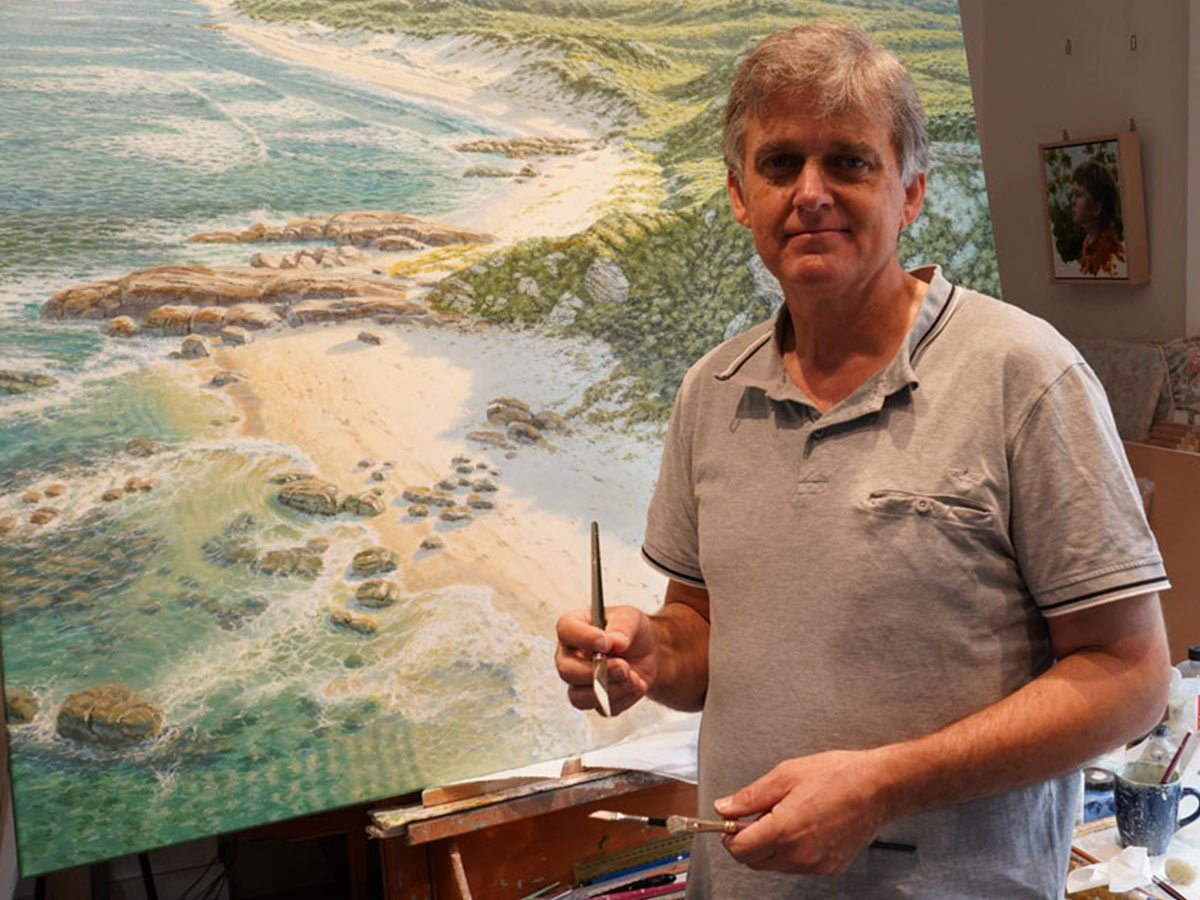Sam Broadhurst has spent over 18 years studying and capturing the Western Australian landscape using a variety of mediums and styles. Fundamental to Sam’s journey in creating each unique art piece is his connection to the environment whilst standing in front of the scene he is expressing. It is his observation of the smaller, less noticeable things that intrigue him and give focus to the here and now.
“I endeavour to convey a sense of calm and peace that pervades through the landscape. From my paintings I hope to inspire people to take time out from busy schedules to notice the vast diversity of beauty within our environment. I believe there is a simplicity in nature that can help add balance to our lives.” – Sam Broadhurst
We invite you to get to know Sam Broadhurst in our Q&A feature below.
Enjoy getting to know Sam Broadhurst
When did you first feel the desire to be artistic and realize you had talent?
Painting was a progression from a young school age. The professional change occurred after working as a research assistant in cancer research.
Where did you learn your art?
Self taught initially, but later through the teaching of abstract artist Yvonne Audette.
What inspires you the most?
The landscape and the connection to it.
What message are you sending to the viewer of your art?
Think more positively towards nature.
Describe your studio
A mix between laboratory, paint and canvas
Describe your typical day of creating art
There is no typical day. Exploring mediums and techniques from the Renaissance, sketching on-site, preparing mediums, pushing paint and stretching linen,
What mediums do you use and why?
Acrylic for conveying realism and heat bodied walnut oil for textural impasto work.
What are you working on now?
A large palette knife oil of an aerial coastal scene.
What are your recent career achievements you feel proud of?
A finalist in the 2020 Lester Prize.
What do you love most about what you do?
The creative process to explore ideas in paint.
Where can you see yourself in 10 years time?
Too hard.
After completing a Bachelor of Science Degree at the University of Melbourne, Sam worked as a Research Assistant at the Peter MacCallum Cancer Institute for about 10 years.
During the late 1990’s, he became aware of the important aspects of painting through the teachings of abstract expressionist Yvonne Audette. Through this experience, Sam developed an awareness of shapes and structure within paintings, giving him an understanding of works ranging from Rembrandt to Cezanne. Since moving to Western Australia he has pursued his art as a full time career.
During the past 22 years he has travelled and painted throughout most parts of Western Australia, soaking up the diversity of the landscape. In 1991 he won the Victorian Artists Society Spring Exhibition and following this won the Camberwell Rotary Travel Award in 1992, enabling him to travel throughout Russia and Europe. He has held 20 solo exhibitions in a diverse range of media, including oils, acrylics, watercolours, etchings and pastels.
For the last 13 years he has been exploring and discovering the materials used by renaissance artists. Through much research into painting practices from treatise dating back to medieval times, he has gained a knowledge and insight into many of these older ways of painting. This has enabled him to incorporate such things as Da Vinci’s oil medium, or occasionally use rare pigments such as lapis lazuli. He picks and presses walnuts from a south west orchard, then purifies and heats the oil for an extensive period to provide a painting medium that is extremely low yellowing and flexible when compared to other oil mediums. This oil is both unique and versatile in its properties and handling abilities, enabling him to move the paint in a way that expresses his perception of nature.
Sam lives on a bush block with his family in a granite house he built himself, outside of Margaret River.
Artist Statement
Painting is about connection and grounding. When in the landscape, it is about the flux between me and what I am experiencing. Something more than just myself. Through the use of art materials some of which I have made, there becomes an understanding between me and the medium used. There is an acknowledgement and reciprocation from the materials, working towards an expression of what is being said in colour.
Being a landscape painter of the South West, I am constantly searching for the depth of understanding that allows me to resonate with this diverse area. Having painted this region for the last 18 years, and raising a family here, has offered me an opportunity to reflect on a way of thinking so often overlooked.
When painting small studies on site, one of the most fundamental things that grounds me to the scene is what I am standing on. It is a concept for me to consider the importance of the smaller objects at our feet, that give the connection to what is and has been. So often I observe in my children their fascination with the smaller things. Intrigued by the variability and diversity of different colours and shapes.
How often do we as adults gaze out at a landscape towards the horizon seeking something more infinite and a little more unknowing. So in a way my paintings represent two ways of thinking. Spanning from the foreground as a child would see, journeying to the horizon as an adult seeking the intangible. Offering the passing and fragility of the foreground, compared to the more eternal distant horizon.
We live in a fast paced world, where it is not always possible to take time to pause and connect with our environment. In my paintings, I have attempted to attend to the small things within nature, focusing on the present and giving priority to the here and now. There is so much to savour, explore and discover, providing opportunities for us to see nature as a precious part of life that is worthy of being given more consideration and care.
Exploring Nature
Painting for me is about exploring those hidden places, and trying to convey the sense of space and colour so often found in this relatively untouched country. Its about getting involved with nature and listening to her changing moods. When painting, I prefer to seek out places often overlooked by most people. I wish to see this country before it changes too much due to the presence of civilisation. In some ways I enjoy the remoteness of certain places, as isolation gives me lots of emotional and mental space, allowing me to connect more closely to nature. Painting is about extending one’s feelings, sensations and awareness. Constantly I ask myself what inspired me about this subject? Quite often I sit patiently for about half an hour before commencing, just absorbing what lies before me. Subsequently, I learn to see the most dominant shapes and patterns, thereby getting to the essence of the landscape. One thing to note, is that this process takes time, and cannot be rushed or hurried. For this reason I paint in solitude.
“In my images, I endeavour to convey a sense of calm and peace that pervades through the landscape. From my paintings I hope to inspire people to take time out from busy schedules to notice the vast diversity of beauty within our environment. I believe there is a simplicity in nature that can help add balance to our lives.” A person can only paint well what he knows intimately. An artist must be around the subject, and be a part of it. It is about understanding the landscape, and immersing yourself within it. The area that I am passionate about painting is the Margaret River region. It offers the diversity that challenges me as an artist. There is no short cut to becoming a good painter, requiring both large amounts of time and discipline.
Through my extensive reading of past artists techniques, I have been able to rediscover those materials and the laws for building up a painting with longevity in mind. Drawn to Flemish artists from the 14th to 15th centuries such as Jan van Eyck, Rogier van der Weyden, and Hans Memling, has inspired me to focus more intensely on the landscape. These artists brought the realism of art to a height of triumph never seen before, and rarely seen since. They painted in a system of transparent layers imbuing their art with a stunning luminosity. Time researching painting methods dating back 600 years has revealed a certain process these artists did in order to create works of exquisite detail and beauty. Looking back has given me the understanding required for the use of the latest artists materials, giving my paintings more depth and clarity of colour that otherwise would have been overlooked.
Materials
CANVAS
The canvas support used for these paintings was an acrylic primed Belgian linen. This type of canvas has the best reputation in the world. It is woven from flax grown in a small area between Normandy and Holland, and has been traditionally done so for about 500 years. Although very expensive, linen is the strongest textile support for painting on. Linen offers a longer term durability than cotton. The fibres of linen are approximately 15 to 30 cm long, whilst cotton is less than a cm. When it comes to using linen, there are many considerations to understand. I have tested the primed linens by submerging them under water for several days to test their resilience to movement and degradation. Sometimes with discarded paintings on top. From this I was able to determine the linens with the most stable sizing and surface. From all the linens available (which is quite a few), I examine the threads per cm and direction of weave. By comparing the warp and weft of canvases, an optimum linen is chosen. The linen used is the thickest linen available, making it difficult to source and more expensive. In order to paint on this very coarse linen, the weave is filled in using the highest quality acrylic polymers, giving a very smooth surface. This process takes several days. This gives the greatest permanence to the artwork by allowing the optimal flexibility to the canvas support, and minimising delamination of the paint film from the canvas. When it comes to stretching linen, 30 years experience certainly helps. If linen is stretched incorrectly, it can lead to puckering and sagging of the support. Stretching cotton is relatively easy, however linen is extremely difficult and unforgiving.
ACRYLIC PAINT
For these paintings an acrylic polymer paint was used due to their versatility and ease of use. Traditionally egg tempera was the choice of water based paints in medieval times. Although it has its merits, it doesn’t have the flexibility for painting on canvas. For my acrylic paintings I use a technique called bottegiondo. It was a bread and butter technique initially used in egg tempera by medieval manuscript artists, and continued on with oil paint by artists such as Van Eyck, Da Vinci, Lorenzo Lotto, and early Titian. It was passed over in the middle to late renaissance due its time consuming method. If you look at my work one can see thousands of tiny marks, adding a vibration to the surface. For all the paints used in my work I research every pigment contained in the tube, making certain the paint is of the highest quality and the most permanent. There are no fugitive colours, they end up in the bin.
BRUSHES
In order to push the boundaries of acrylic painting, handmade brushes of various fibres (both natural and synthetic) were sourced from overseas due to their unavailability in Australia. These high quality brushes allowed me to manipulate the acrylic paint in such a way as to give both detail and atmosphere to my paintings. By experimenting with the different brushes, I found certain fibres produced varying responses to the acrylic paint, often requiring more than a dozen different brush types on each painting.
VARNISH
For future conservation purposes a non removable and non yellowing isolation coat was applied over the paint film prior to varnishing. This isolation coat physically separates the paint film from the removable varnish. This will help protect the surface if the varnish is ever removed, making future cleaning and conservation easier. The archival varnish contains Ultra Violet Light Stabilisers to help protect colours from damaging light sources.
OIL PAINTINGS
For the last 13 years I have been exploring and discovering the materials used by renaissance artists through to the post impressionists. It has been a quest that has taken me travelling throughout Australia scurrying through libraries searching for lost clues and snippets. Gleaning a sentence from a manuscript or treatise copy, or a published text. Contacting conservators both in Australia and overseas, endeavouring to piece together lost recipes, of which most are a complete fabrication and time waster. I have tried over 300 recipes for producing an oil medium. It has been a detective story gaining an understanding of the secret/lost medium. Never complete, only snippets here and there. Studying an old masters paintings, revealing a hidden clue painted within his paintings as to some of the preparation of this oil medium, to Da Vinci’s writings only finding 2 sentences, and then another well known artist who visited Da Vinci’s studio after his death to pass on another oil preparation method to one of his students scrawled on the bottom of his sketch book. And then another clue lay in one of Van Gogh’s letters to his brother Theo. From a combination of my scientific background and artistic understanding, I believe I have come to a completion of my understanding of this oil medium. I picked and pressed walnuts from a south west orchard, then purified and heated the oil for an extensive period to provide my painting medium. This medium is now enabling me to paint in a more contemporary way using thick slabs of paint with a palette knife, giving life and texture to the paint surface. By adding it to purchased oil paint, it gives the paint a certain glow by allowing more light between the pigment particles. The heat bodied walnut oil greatly reduces cracking, wrinkling, and yellowing of the paint film. This oil is both unique and versatile in its properties and handling abilities, enabling me to move the paint in a way that expresses my perception of nature.
Awards
- 2021 Winner of Viewers Choice, Vasse Art Show
- 2020 Finalist Lester Prize
- 2018 Finalist Royal Perth Landscape Prize
- 2018 Winner Homegrown Prize, Vasse Art Show
- 2017 Finalist Royal Perth Landscape Prize
- 2012 Winner of Viewers Choice, South Western Times Survey
- 2010 Highly Commended Camberwell Rotary Art Show (Vic)
- 2003 Highly Commended Cossack Art Award
- 1992 Winner of the Camberwell Rotary Travel Grant Award
- 1991 Winner of the Victorian Artists Society Spring Exhibition





View – Sam Broadhurst Exhibition
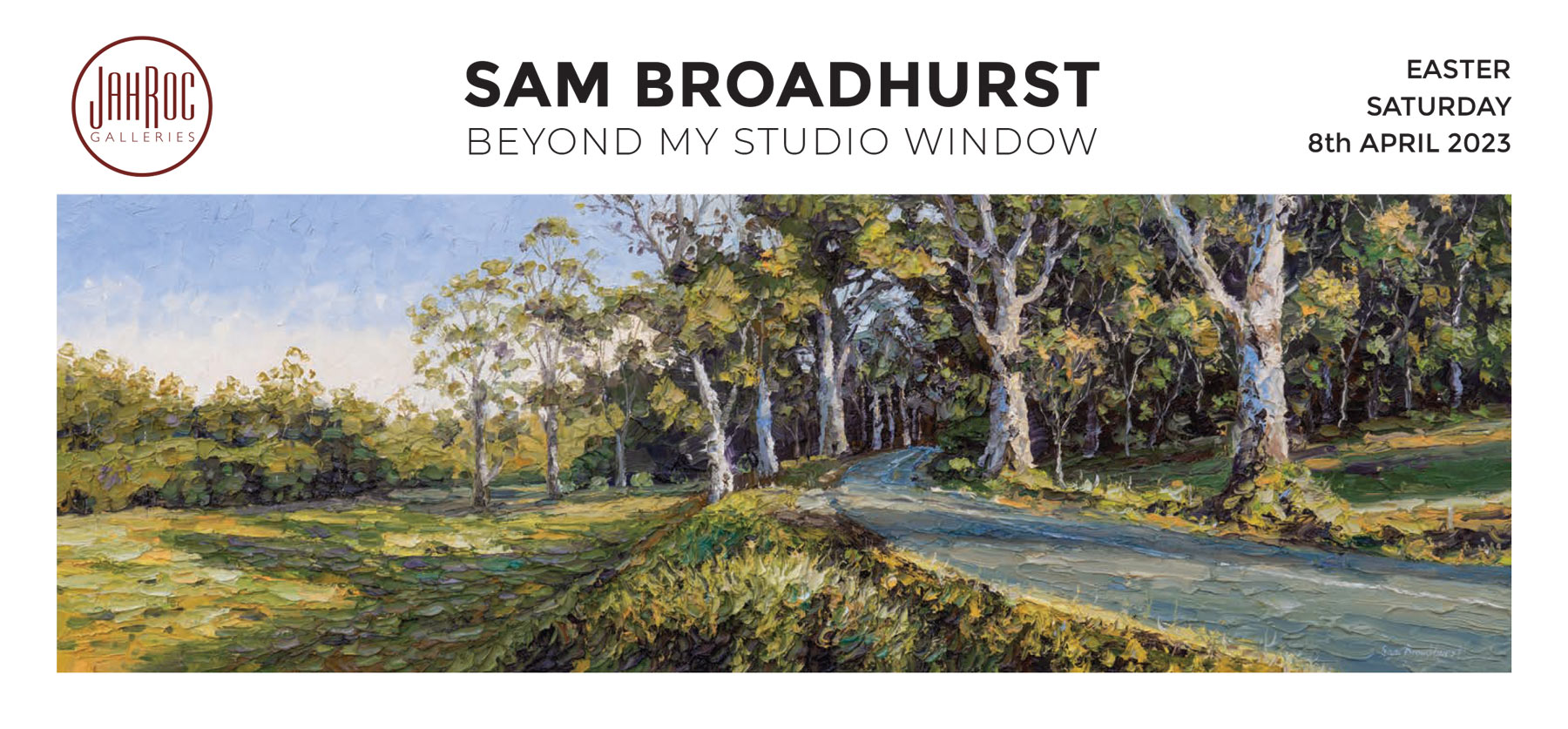
View all exhibition artworks for Beyond My Studio Window here.
Sold Paintings by Sam Broadhurst
Scroll through a selection of Sam Broadhurst paintings sold by JahRoc Galleries:
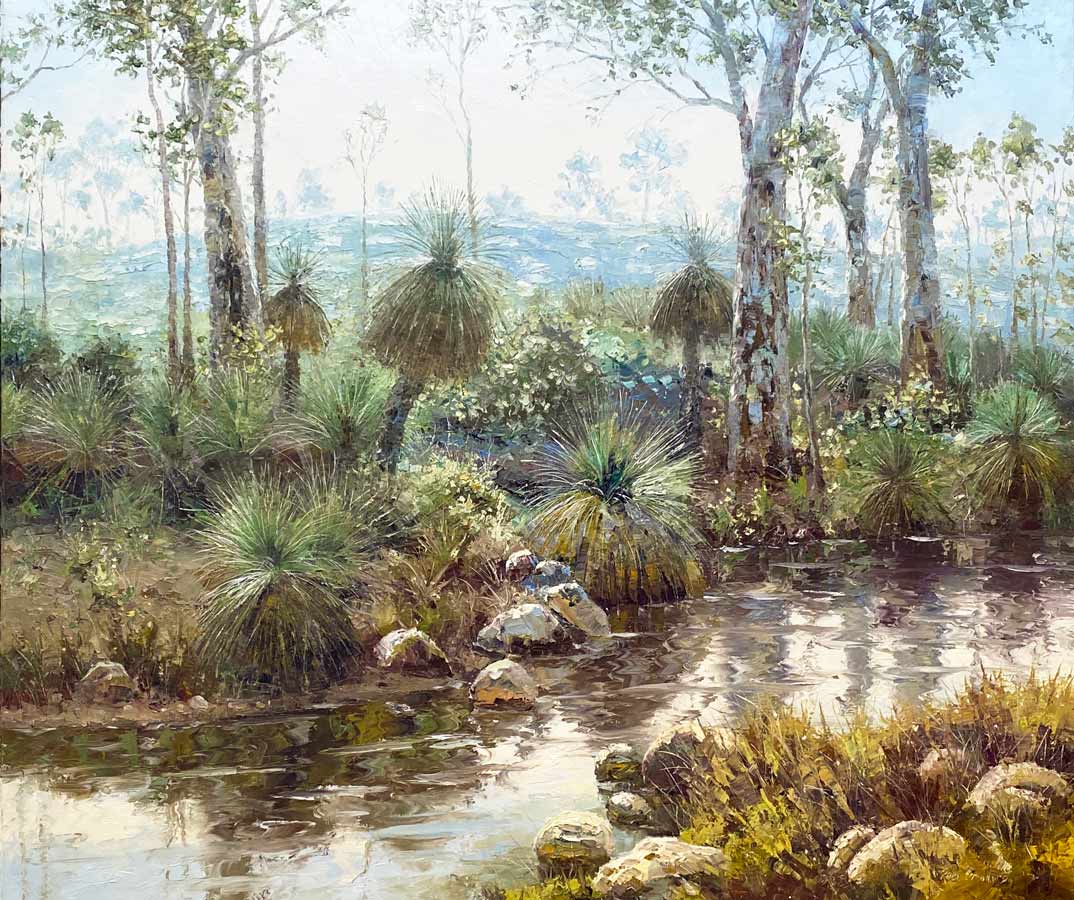
136cm x 116cm
SOLD
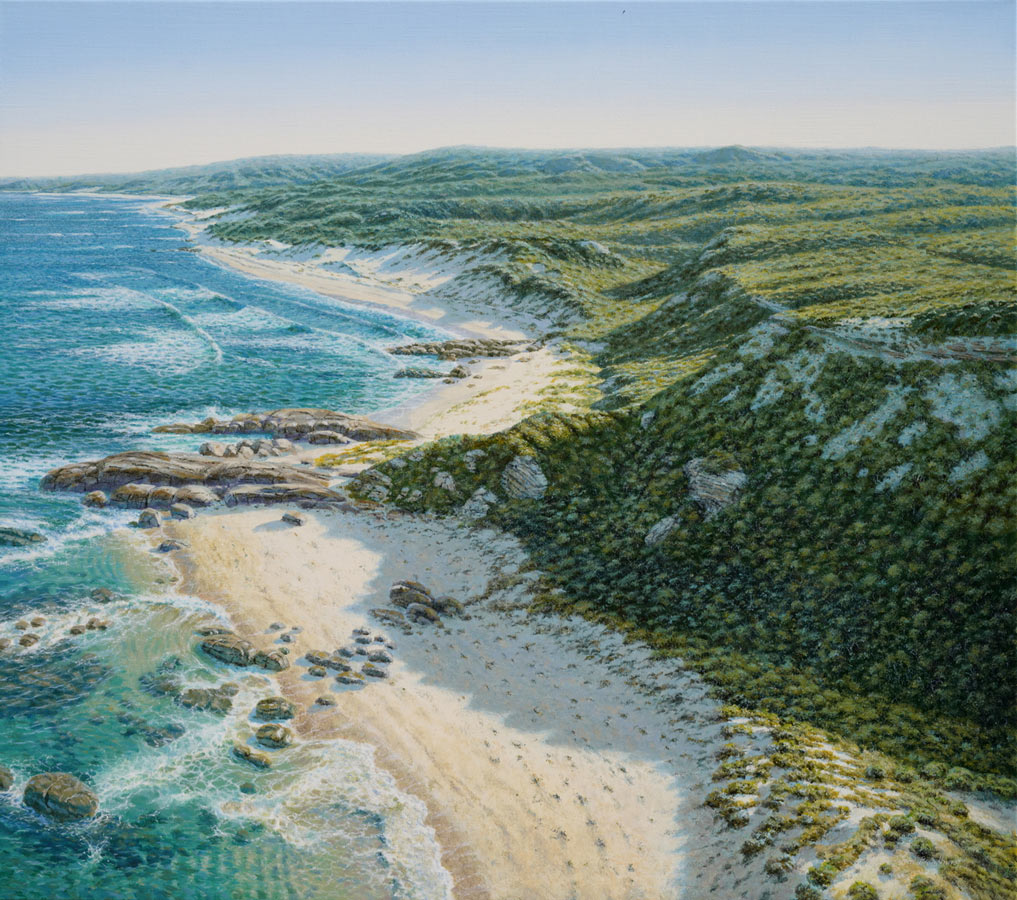
136cm x 120cm
acrylic on Belgian linen
SOLD
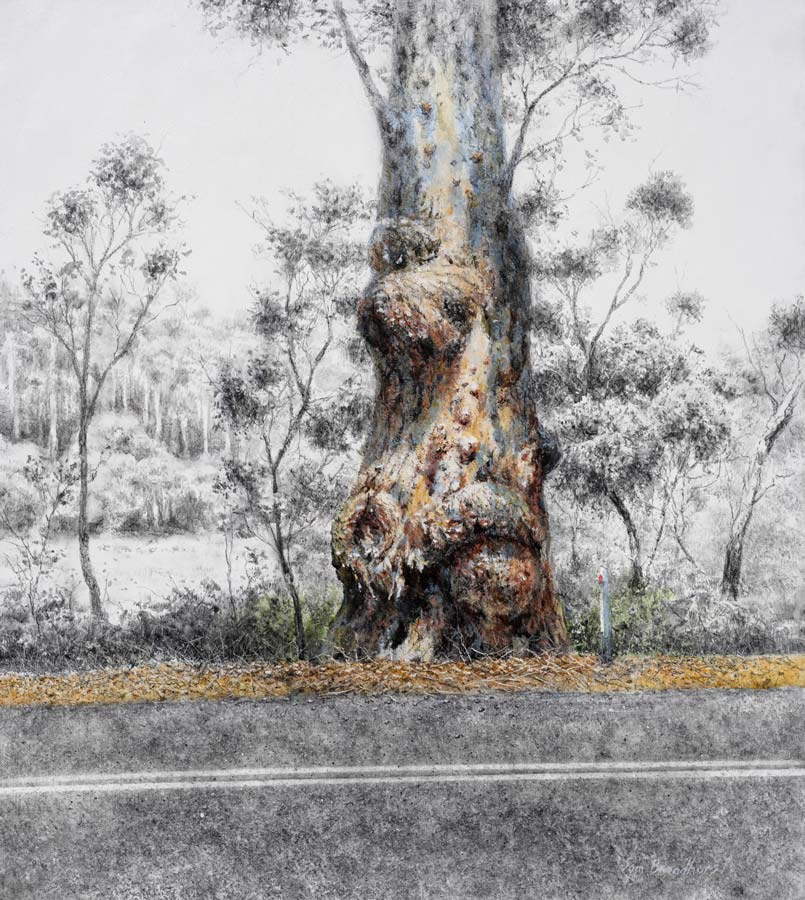
55cm x 60cm
charcoal and Lapis mineral pigment
SOLD
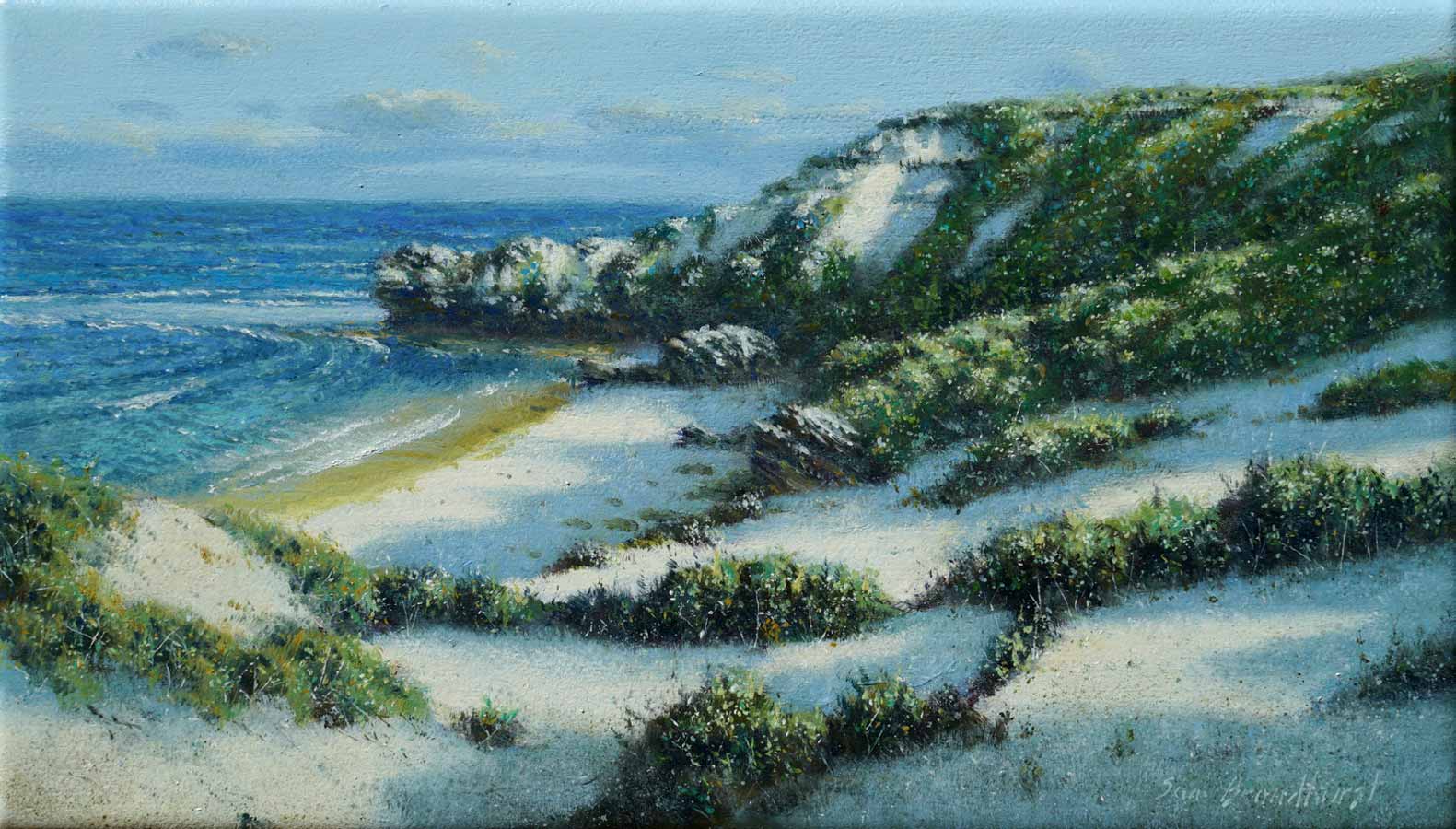
45cm x 30cm
heat bodied walnut oil on linen
SOLD
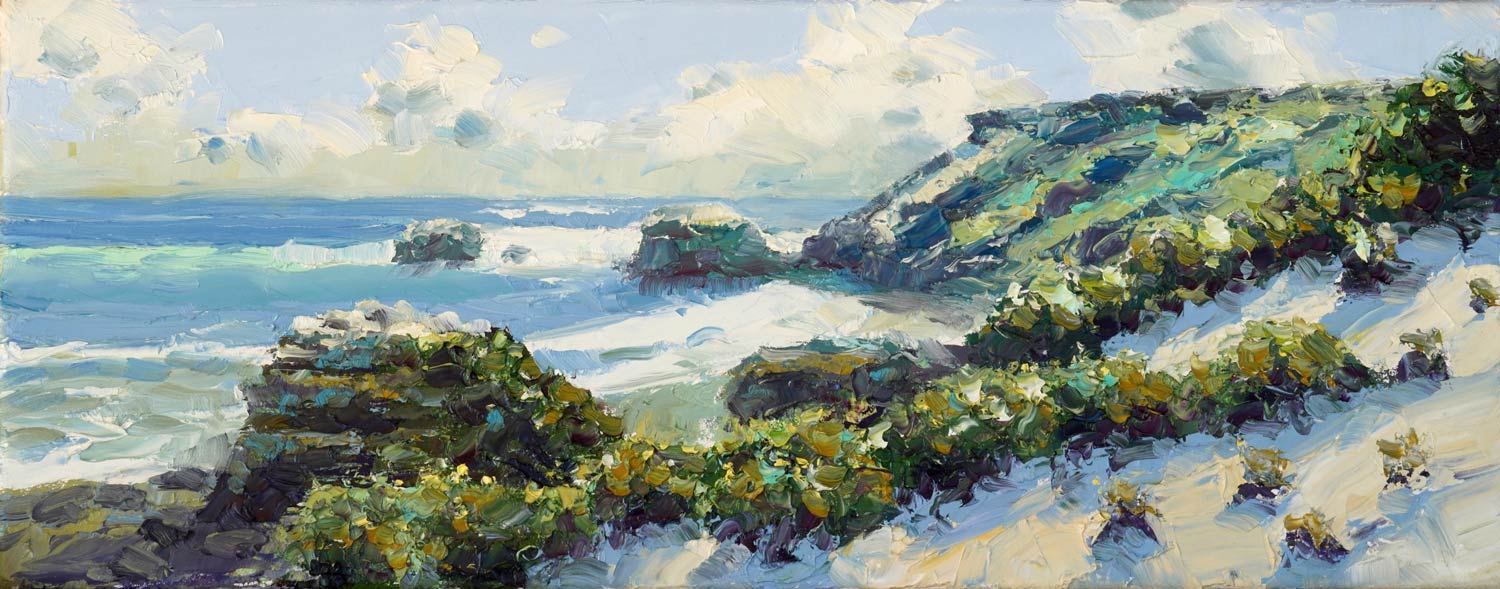
60cm x 29cm
heat bodied walnut oil on linen
SOLD

28cm x 22cm each panel
heat bodied walnut oil on linen
SOLD

